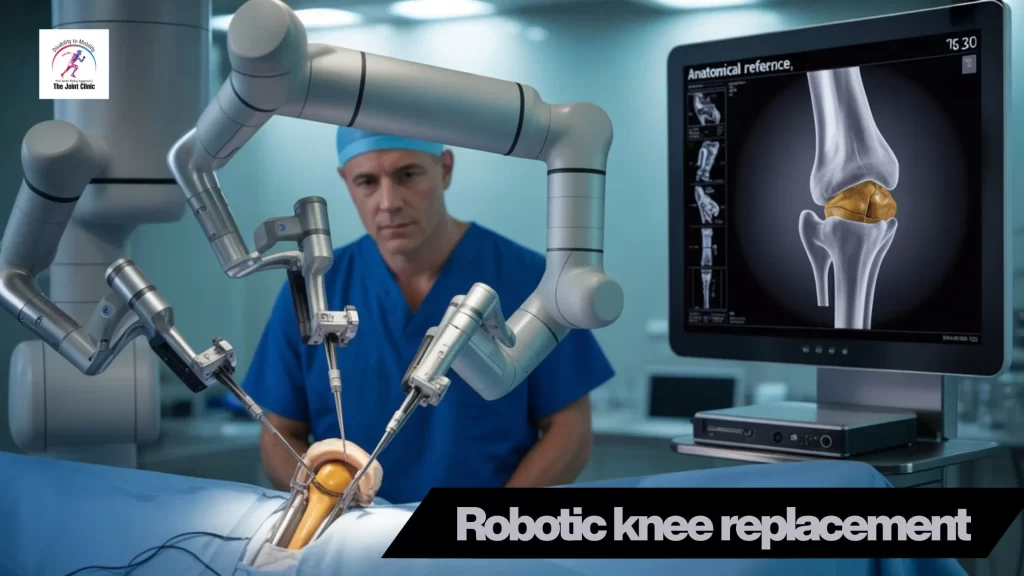Knee replacement surgery is one of the most successful orthopedic procedures worldwide, helping patients with severe arthritis and knee damage regain mobility and live pain-free. Traditionally, surgeons have relied on manual techniques to perform this surgery. However, with the advent of advanced medical technology, robotic knee replacement has emerged as a modern alternative that promises greater precision, quicker recovery, and better long-term outcomes.
Patients often ask: “How does robotic knee replacement differ from traditional surgery?” The answer is not just about technology—it’s about accuracy, patient recovery, risks, and even cost.
This detailed guide will help you understand the differences between robotic knee replacement vs traditional surgery, so you can make an informed decision for yourself or your loved ones.

What Is Traditional Knee Replacement?
Traditional knee replacement surgery has been performed for decades and has transformed millions of lives. In this method, the surgeon:
- Makes an incision to expose the knee joint.
- Removes damaged cartilage and bone manually using surgical instruments.
- Places the artificial implant using standard guides and measurements.
Advantages of Traditional Knee Replacement
- Proven and widely available.
- More cost-effective compared to robotic surgery.
- Experienced surgeons have performed it successfully for decades.
Limitations of Traditional Knee Replacement
- Accuracy depends heavily on the surgeon’s skill and judgment.
- Higher chances of implant misalignment.
- Recovery may take longer, with more pain in the initial weeks.

What Is Robotic Knee Replacement?
Robotic knee replacement combines the surgeon’s expertise with advanced robotic assistance. Using 3D CT scans and computer-assisted planning, the surgeon creates a personalized surgical plan. During the procedure, the robotic arm assists the surgeon in making precise bone cuts and positioning the implant with millimeter-level accuracy.
How It Works
- Pre-surgical Planning: Advanced imaging creates a 3D model of the patient’s knee.
- Intraoperative Guidance: The robotic arm guides the surgeon, ensuring precise movements.
- Real-Time Adjustments: The system adjusts in real-time, minimizing errors.
Advantages of Robotic Knee Replacement
- Higher accuracy in implant placement.
- Smaller incisions and less tissue damage.
- Quicker recovery with reduced post-operative pain.
- Better long-term implant survival.
Key Differences Between Robotic Knee Replacement vs Traditional Surgery
1. Accuracy & Precision
- Traditional Surgery: Based on manual skills, visual judgment, and mechanical tools.
- Robotic Surgery: Uses computer mapping to ensure accurate alignment within ±1 mm.
Studies show that robotic surgery reduces “outliers” in implant positioning, which can directly impact knee function and implant lifespan.
2. Implant Alignment & Longevity
Implant alignment is one of the most critical factors for long-term success.
- Traditional Surgery: Misalignment can cause uneven stress on the implant, leading to early wear.
- Robotic Surgery: Perfect alignment improves joint movement and increases implant longevity.
3. Recovery & Rehabilitation
- Traditional Surgery: Patients may take 3–6 months for full recovery. Pain and stiffness are more common in the early weeks.
- Robotic Surgery: Many patients report faster recovery, less swelling, and quicker return to activities within 4–8 weeks.
4. Safety & Risks
- Traditional Surgery: Safe, but has variability in outcomes depending on the surgeon’s experience.
- Robotic Surgery: Reduces the risk of misalignment but requires an experienced robotic surgeon.
Common risks like infection or blood clots remain for both, but robotic technology reduces technical errors.
5. Cost Comparison
- Traditional Surgery: More affordable, ranging between ₹2–3 lakhs in Delhi (approximate).
- Robotic Surgery: Higher cost, usually ₹3.5–5 lakhs due to advanced systems.
While robotic surgery is costlier, many patients view it as an investment in long-term outcomes and faster rehabilitation.
Who Should Consider Robotic Knee Replacement?
Robotic knee replacement may be suitable for:
- Patients with advanced arthritis causing severe pain.
- Younger patients seek longer implant survival.
- People with complex knee anatomy or deformities.
- Patients want faster recovery with less pain.
Best Robotic Knee Replacement Surgeon in Delhi
Technology alone cannot guarantee the best outcomes—the surgeon’s expertise is equally important. Choosing the Best Robotic Knee Replacement Surgeon ensures that you benefit from both advanced technology and years of surgical experience.
Dr. Amite Pankaj, one of the leading names in Delhi, specializes in robotic and traditional joint replacements. His expertise ensures precise implant placement, quicker recovery, and improved patient satisfaction. With advanced infrastructure and personalized care, patients achieve excellent long-term results.
Patient Experience: Recovery Timeline
Traditional Knee Replacement Recovery
- Hospital stay: 4–6 days.
- Return to daily activities: 8–12 weeks.
- Full recovery: 4–6 months.
Robotic Knee Replacement Recovery
- Hospital stay: 2–4 days.
- Return to daily activities: 4–6 weeks.
- Full recovery: 2–3 months.
Patients who undergo robotic procedures often report walking without support earlier and experiencing less stiffness during physiotherapy.
FAQs
Q1. Which is better: robotic knee replacement or traditional surgery?
Robotic surgery offers greater accuracy and faster recovery, while traditional surgery is more affordable and widely practiced.
Q2. Does a robot perform the surgery?
No, the surgeon remains in full control. The robotic system assists with accuracy and precision.
Q3. How much does robotic knee replacement cost in Delhi?
Typically higher than traditional, averaging ₹3.5–5 lakhs, depending on the hospital and system used.
Q4. Is robotic knee replacement safer?
Yes, it reduces the chances of misalignment and improves outcomes, though both surgeries are safe with an experienced surgeon.
Q5. Who qualifies for robotic knee replacement?
Patients with severe arthritis, younger individuals, and those wanting quicker recovery are good candidates.
Conclusion
When comparing robotic knee replacement vs traditional surgery, the differences are clear. Robotic surgery provides higher accuracy, better implant alignment, and faster recovery, while traditional surgery remains effective and more budget-friendly.
Your choice should depend on your health condition, activity level, budget, and most importantly, the expertise of your surgeon.
If you’re considering advanced treatment, consult the Best Robotic Knee Replacement Surgeon in Delhi—Dr. Amite Pankaj—for expert advice and world-class care. With the right combination of technology and skill, you can regain mobility and live a pain-free, active life.
